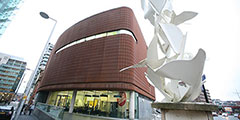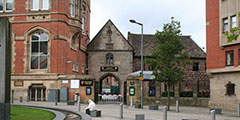“The democracy process provides for political and social change without violence.”
– Aung San Suu Kyi
The People’s History Museum holds a wealth of evidence, information and personal stories, linked to the many of the movements, events and places highlighted in this trail.
This National Museum has exhibits on suffrage, education, trade unions, co-operative societies, and the development of the post-war peace movement. It looks at social justice including issues of sexuality, belief, culture and race. Here, you will find the perspectives of working people as well as political parties. It is an ideal spot to find out more information if you’ve been inspired by the trail, especially if you miss any of the stations or are interested in a special theme. It’s open daily from 10am to 5pm and entrance is free.
The museum began life with the Trade Union, Labour and Co-operative History Society. It set up a small collection in the 1960s, and in the 1970s/80s ran a small museum in London. When this closed, the Greater Manchester authorities made a funding offer for the collections. A new trust opened a museum in Princess Street in 1990, and later opened galleries at the Edwardian Pump House on Bridge Street. From 2001 the organisation was called the Peoples History Museum, closing in 2007 for a huge redevelopment at this new site. The new museum opened in 2010 and incorporates flexible spaces for events and a range of themed galleries, as well as an archive and study centre.
Outside, we are reminded of Manchester’s associations with Nuclear Free Local Authorities and Mayors for Peace. The ‘Doves of Peace’ statue, commemorating the city’s ‘nuclear-free city’ declaration, is installed here.
Two plaques commemorate the 40th and 65th anniversaries of the Hiroshima and Nagasaki atomic bombings in 1945. They were rededicated by the Mayor of Nagasaki in a special ceremony in 2010, and are located on the wall of the museum.







 6 minutes
6 minutes






